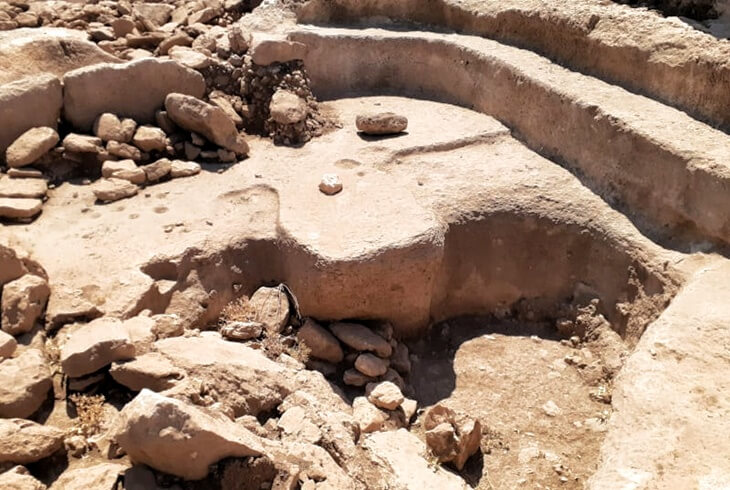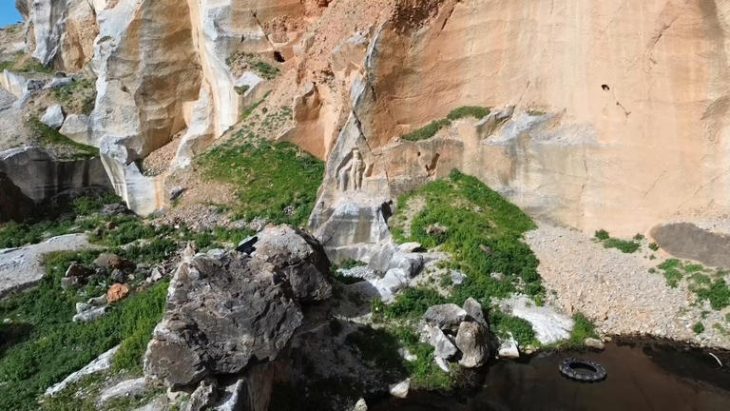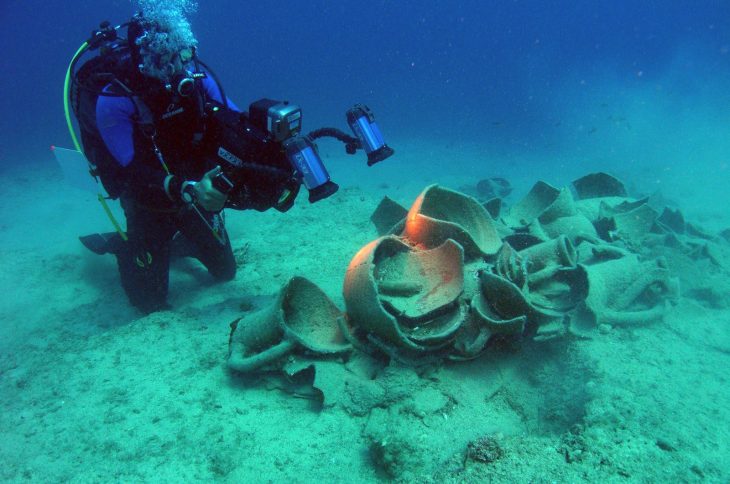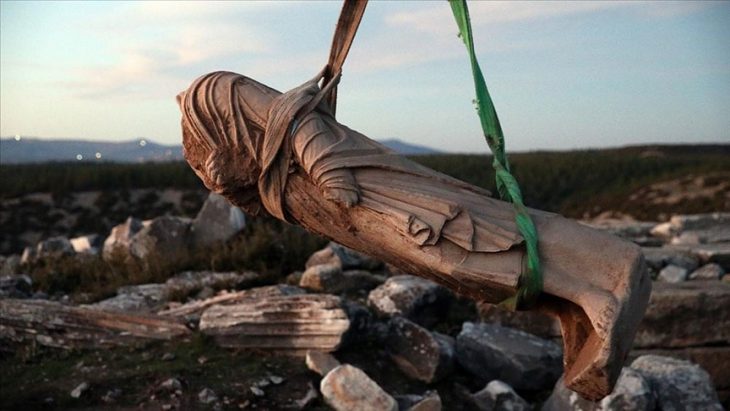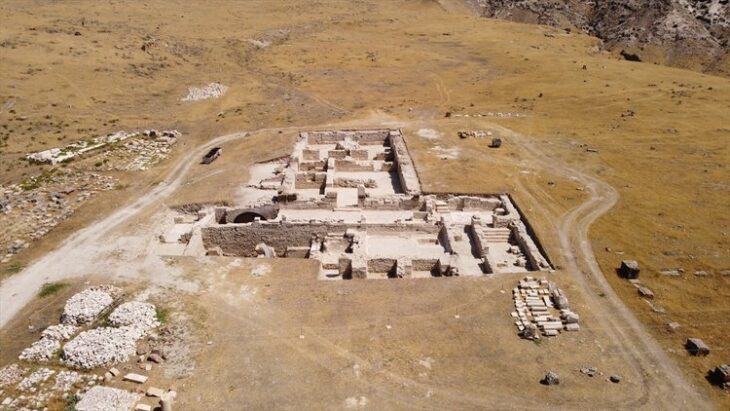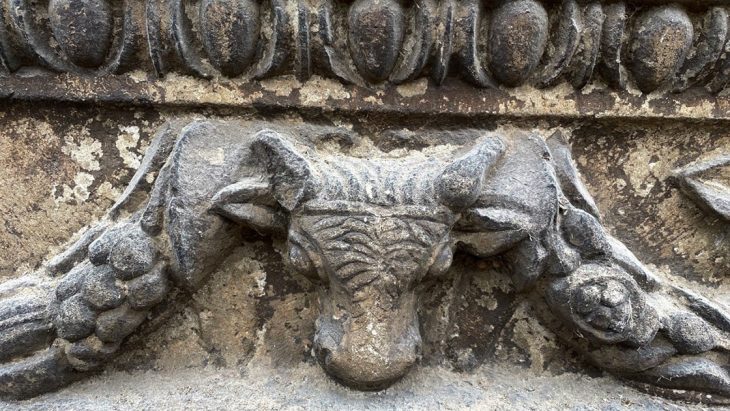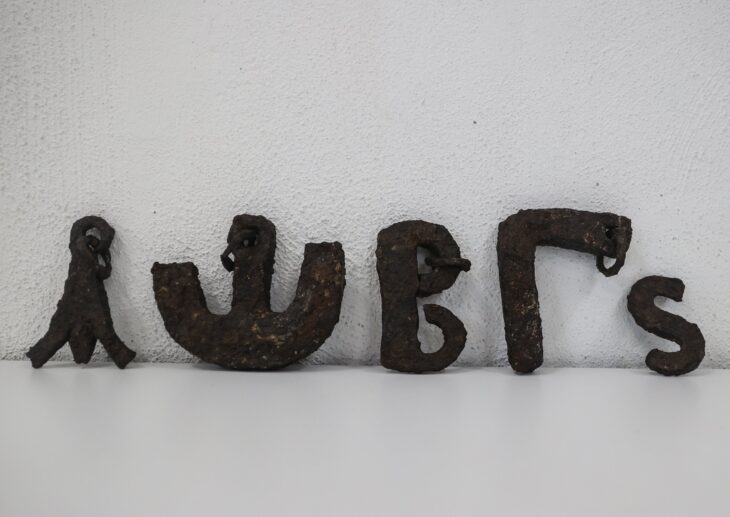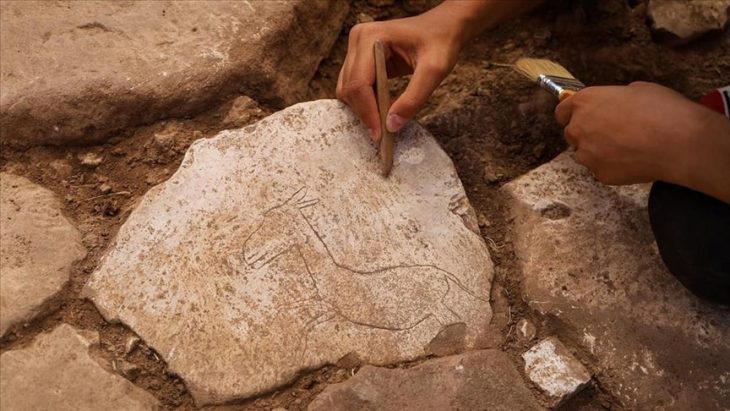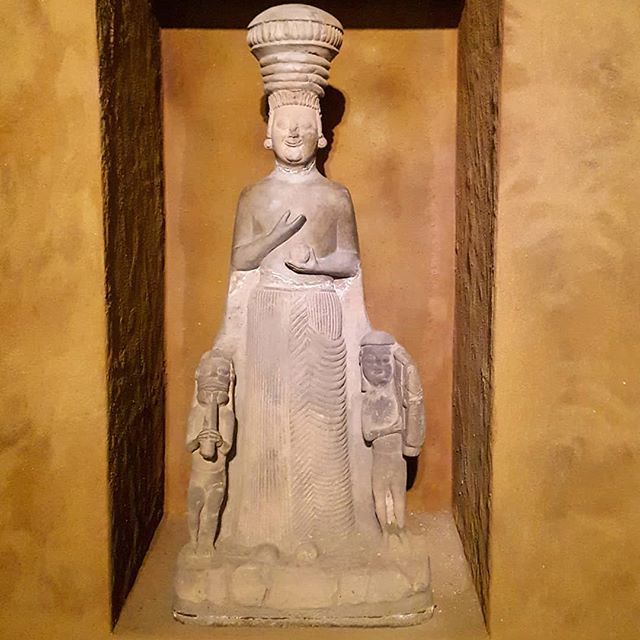Harbetsuvan Hill is similar to the acropolises built on the hills near the ancient Greek cities. It was established in a mountainous region called the Tek Tek Mountains, at an altitude of about 714 m above sea level.
Research carried out in Şanlıurfa since 1997 has led to the discovery of many cult centers symbolized by “T”-shaped pillars in the region.
You may have heard of these discovered cult centers with the name Taş Tepeler or Stone Hills many times. The most famous of these cult centers are Göbeklitepe and Karahantepe.
Harbetsuvan Tepe (Harbetsuvan Hill), which is approximately 7 km from Karahantepe, is built on a high hill and has a panorama that can see almost the entire Harran plain. Harbetsuvan Tepe, which was discovered for the first time during the surveys carried out in 2014, is located within the borders of the Eyyübiye district of Şanlıurfa province.
During the salvage works carried out on Harbetsuvan Hill, one of the small cult centers, in 2017, it was understood that the architecture unearthed was similar to the Göbeklitepe II layer architecture.
📣 Our WhatsApp channel is now LIVE! Stay up-to-date with the latest news and updates, just click here to follow us on WhatsApp and never miss a thing!!
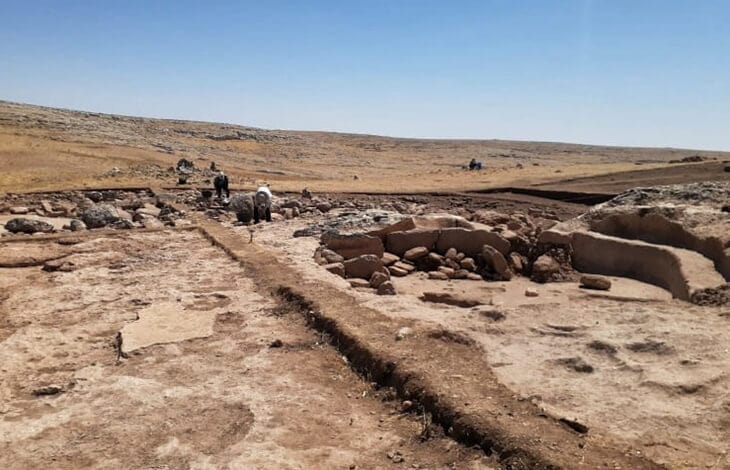
Three of these cult centers, which are contemporary with Göbeklitepe’s Levels III and II, dated to the Pre-Pottery Neolithic A phase (PPNA) and the Pre-Pottery Neolithic B phase (PPNB) are the same size or even larger centers of Göbekli Tepe. Researches strengthen the possibility that Karahantepe, Ayanlar Höyük, and Tepehan Höyük are contemporary with Göbeklitepe’s Level III. Other small cult centers such as Harbetsuvan Tepesi, Sefer Tepe, Kurt Tepesi, Sayburç, and Taşlı Tepe generally have an area of 5-15 decares and are contemporary with Göbeklitepe’s level II.
During the surveys around Harbetsuvan Tepe, slope settlements, trap areas, and rock shelters were identified. The slope settlements are approximately 3-5 decares in size and face south, west, or southwest.
The reasons for the establishment of the slope settlements must be the gazelles in the region and the trap areas built accordingly. As a result, Harbetsuvan Hill looks like a center with ties to trap areas, slope settlements, and rock shelters. Compared to Karahantepe located next to it, the fact that Harbetsuvan Hill was established in a place overlooking the plain also gives the impression that this center was established for Karahantepe.
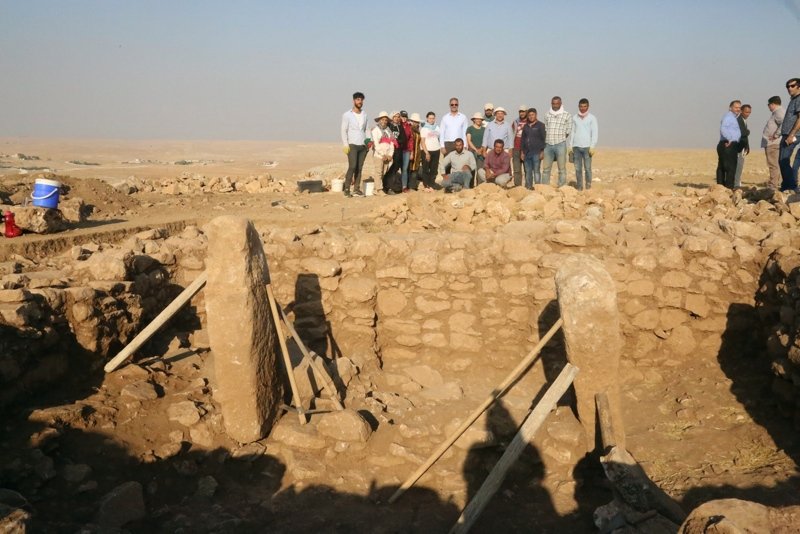
During the survey on Harbetsuvan Tepe, pools carved into the bedrock, and tools made of flint and obsidian were found. Thanks to the finds, it was understood that the settlement was established as a small cult center in the B phase of the Pre-Pottery Neolithic Period (PPNB).
In addition, many “T” shaped pillars, which we know from Nevali Çori, Sefer Tepe, Hamzan Tepe, and Göbekli Tepe, were also found on the surface of the hill.
As a result of the research carried out at the settlement, finger reliefs were also found on a “T” -a shaped pillar that was unearthed in an area excavated by illegal diggers.
The preserved part of Harbetsuvan Hill covers an area of approximately 6,000 square meters. The settlement is concentrated at the very top of a rocky hill.
Plenty of flint deposits were also found on the surface in the area called Recmelsuvan, 10 km south of Harbetsuvan. In the Harbetsuvan Tepe settlement, the flint finds are concentrated in the whole area. The number of flints per 1 m² area is about 30.
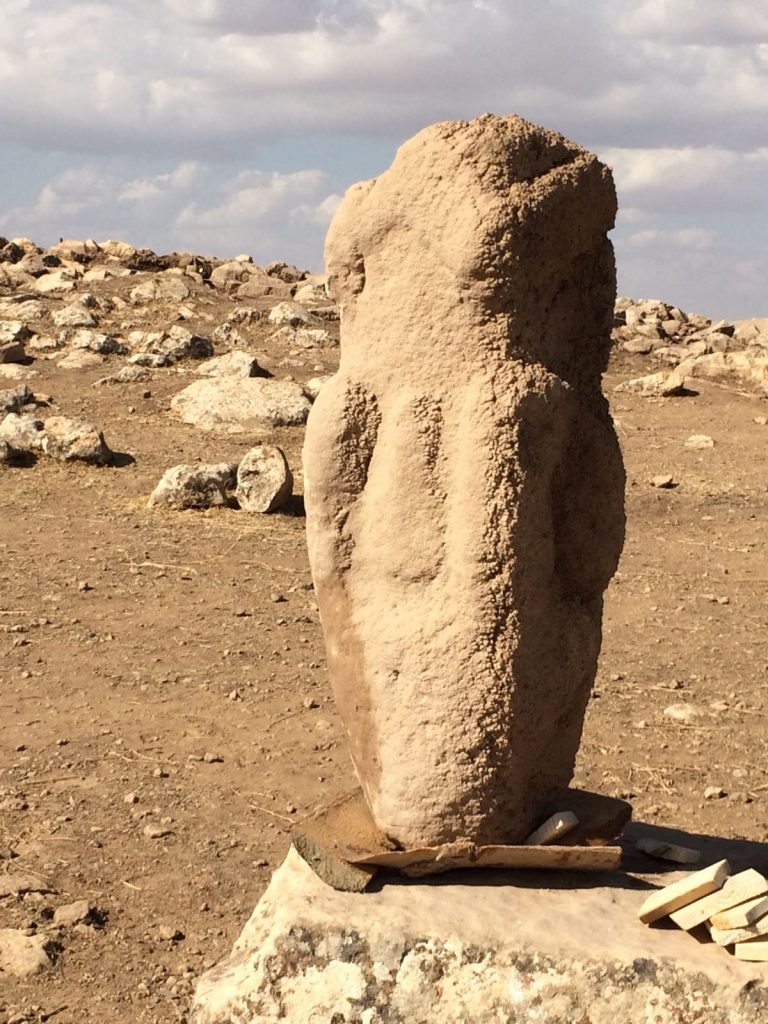
Harbetsuvan Hill architecture is similar to Göbeklitepe II layer architecture. However, the entrance to the place, which is not seen on Göbeklitepe II level, was encountered on Harbetsuvan Hill. When the sculptural works in Harbetsuvan are examined, it is seen that they have similar characteristics to the works found in Karahantepe and Göbeklitepe.
Many independent standing stone fragments were found in trench K4. These obelisks are usually the head parts of most stelae. A sculpture fragment was found on a wall in the southern part of the trench. The statue is a 70 cm high, seated male statue with a phallus and its counterparts are known from Karahantepe and Göbeklitepe. In trench K4, an in-situ obelisk was found half embedded in the wall. This obelisk is placed on a wall. This architectural feature, which is very common in Göbeklitepe II layer, is also seen in the Nevali Çori cult building.
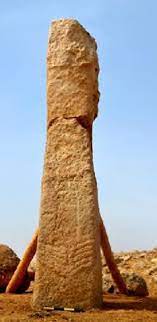
A stone bench was found intact just east of the same trench. This stone bench is 1.65m long, 1.16m wide and approximately 20cm thick. Similar ones were recovered from Göbekli Tepe and Nevali Çori. However, the only stone bench found intact so far is this stone bench found in trench K4.
When the sculptural works in Harbetsuvan are examined, it is seen that they have similar characteristics to the works found in Karahantepe and Göbeklitepe. As a result, it is thought that the Harbetsuvan excavation will bring new information to the scientific world in terms of showing promising finds already in the first excavation season and illuminating the Pottery Neolithic Period B phase in the region.
Source: Çelik, Bahattin , Uludağ, Celal, “Yeni Bir Çanak Çömleksiz Neolitik Dönem Kazısı: Harbetsuvan Tepesi“
Çelik, Bahattin, “Differences and Similarities Between the Settlements in Şanlıurfa Region where “T” shaped Pillars are Discovered” TÜBA-AR S..17, (2015a), s.9-24.

